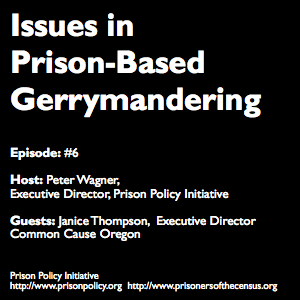New Jersey campaign against prison-based gerrymandering launched
New coalition says a fast redistricting timeline does not mean prison-based gerrymandering can not be addressed.
by Peter Wagner, February 16, 2011
New Jersey has the fastest redistricting timeline in the nation, but that doesn’t mean the state can’t address prison-based gerrymandering. That’s what members of the Integrated Justice Alliance have been telling legislators at hearings held across the state in recent weeks.
In their testimony, the Alliance called upon the state to follow the lead of Maryland, Delaware and New York and adjust the federal census to avoid prison-based gerrymandering. They’ve presented alternative ways for the state to avoid and minimize prison-based gerrymandering, and even presented the Apportionment Commission with the demographic data from the 12 Census blocks that contain the state’s federal and state prisons.
“Having presented testimony at four public hearings over the past two weeks, we have concrete indications that the public officials who sit on the Apportionment Commission of New Jersey have heard us and are ready to take some action during their redistricting process. It will be another victory for NJ in correcting racial and economic injustices,” said Alliance Chairwoman Margaret Atkins.
The Integrated Justice Alliance’s strategy around this and other criminal justice issues in NJ is being developed by a core steering group of 22 organizations who advocate for effective public policies before, during, and after incarceration in New Jersey. The Alliance grew out of another coalition that led an 18 month listening tour of community-based public hearings informed by those most directly affected by the criminal justice system around the state to craft and ultimately pass three major pieces of legislation addressing incarceration and reintegration policies and practices in New Jersey.
The Alliance’s submitted testimony, exhibits and contact information for the leaders are available on the New Jersey campaign page.
“I have found that most people don’t even realize that this kind of gerrymandering even takes place,” said Brother Aula Sumbry, Chair of the Racial and Economic Disparities Subcommittee of the Integrated Justice Alliance. “My prayer is that, as we make the citizens of this state and the Apportionment Commission aware of the fundamental unfairness of Prison Based Gerrymandering, the Commission will at minimum not continue the practice of padding the political power of the communities where prisons are located at the expense of the home communities of the prisoners and the rest of the state.”
 Play (17:02, 8.4MB)
Play (17:02, 8.4MB)


